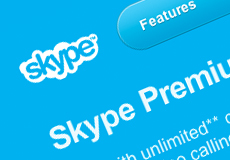Microsoft has announced a partnership with the NFL to develop technology that will make football games more interactive for Xbox Live subscribers. The deal, reportedly worth $400 million over the next five years, was announced yesterday during Microsoft’s unveiling of its next-generation Xbox One gaming console. It marks the latest digital step by the NFL to enhance its live game broadcasts. Continue reading Microsoft and NFL Team Up for Interactive Game Broadcasts
Startup company Rabbit has created a video chat program in which users can share music and videos in real-time while chatting with one another. Users can have multiple conversations with friends, that all appear in circular bubbles to enhance the feeling of being in the same space together. The new approach by Rabbit could possibly provide competition for other successful programs such as Skype, Apple’s FaceTime, and Google+ Hangouts. Continue reading Rabbit Hops Into the Game with New Video Chat Program
By
emeadowsMarch 25, 2013
Companies such as Google and Apple have created voice-activated technologies that allow consumers to speak with their devices. Now, startup Volio is taking a similar approach with its “Talk To Esquire” app for the iPad and iPhone, in which videos have been pre-produced that allow users to “have a conversation” with the writers from Esquire. Volio’s founder envisions a new era of video interaction across multiple industries. Continue reading Volio Tests Virtual Video Conversations with Esquire Staff
By
Dennis KubaJanuary 4, 2013
With entertainment spending growing to $18.7 billion according to IHS Screen Digest, the entertainment industry is reaping the rewards of offering consumers more choice and options in how they consume content. TV Everywhere’s multi-channel, multi-device approach is finally complementing rather than cannibalizing. The year saw strong growth in Blu-ray discs. UltraViolet’s 7 million households and 8,500 titles now position the format to grow significantly in 2013. Video streaming or SVOD tripled in the first three quarters of the year to an estimated $1.7 billion. And studios continue to experiment with their windowing strategies for electronic sell-through. In this environment, the CE industry continues to respond and innovate. Continue reading CES 2013: Entertainment Trends Drive New Technologies


